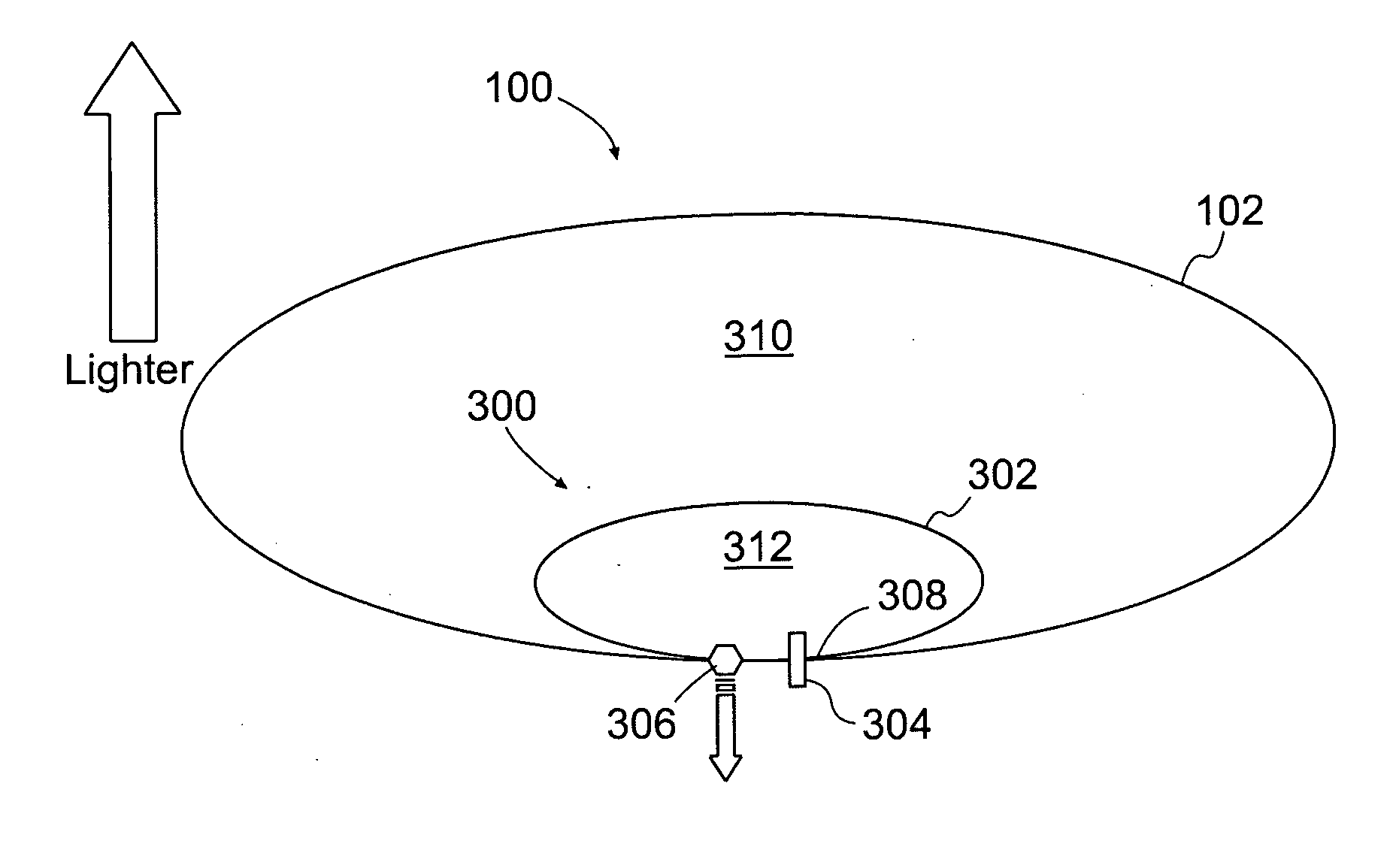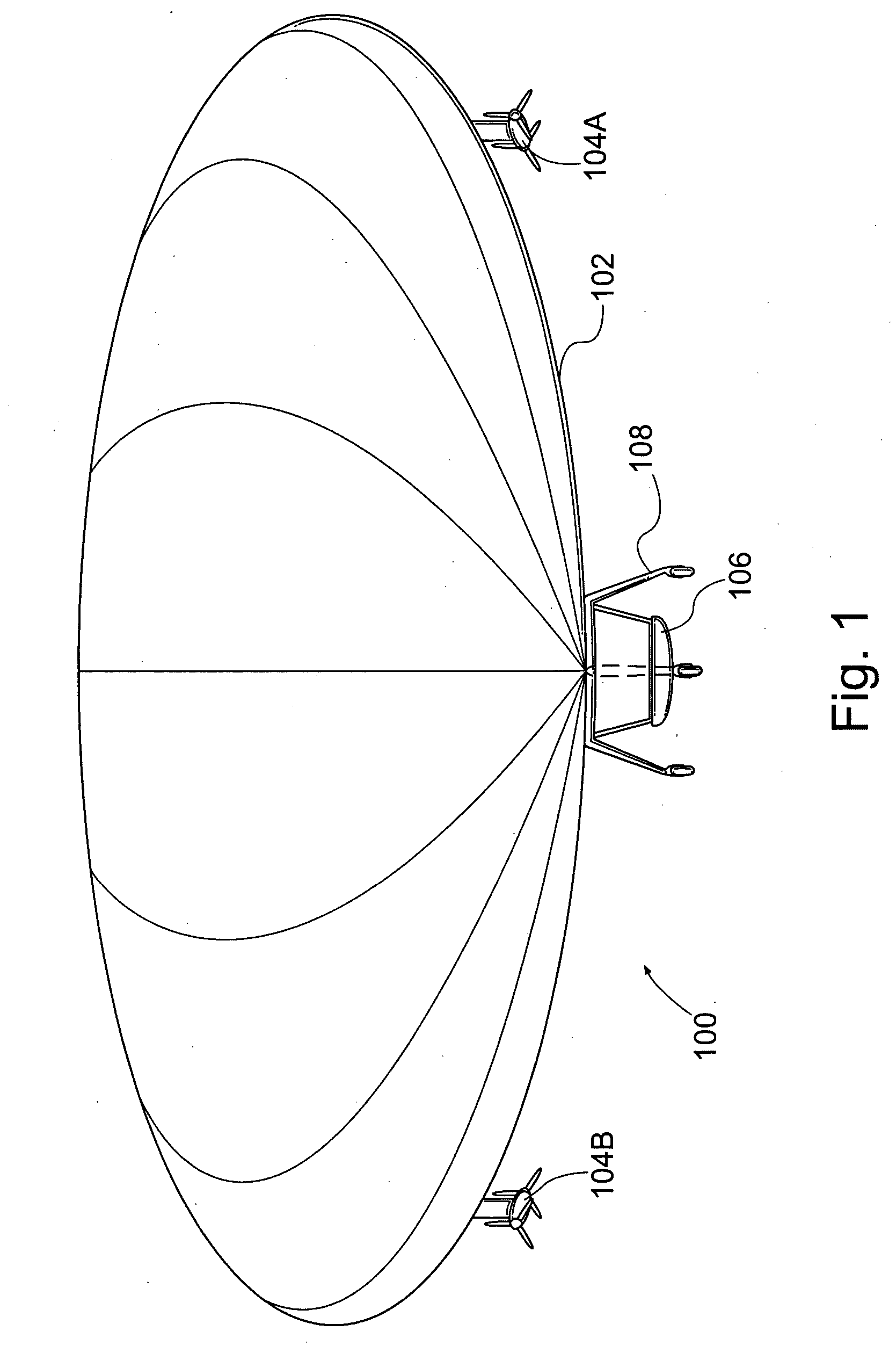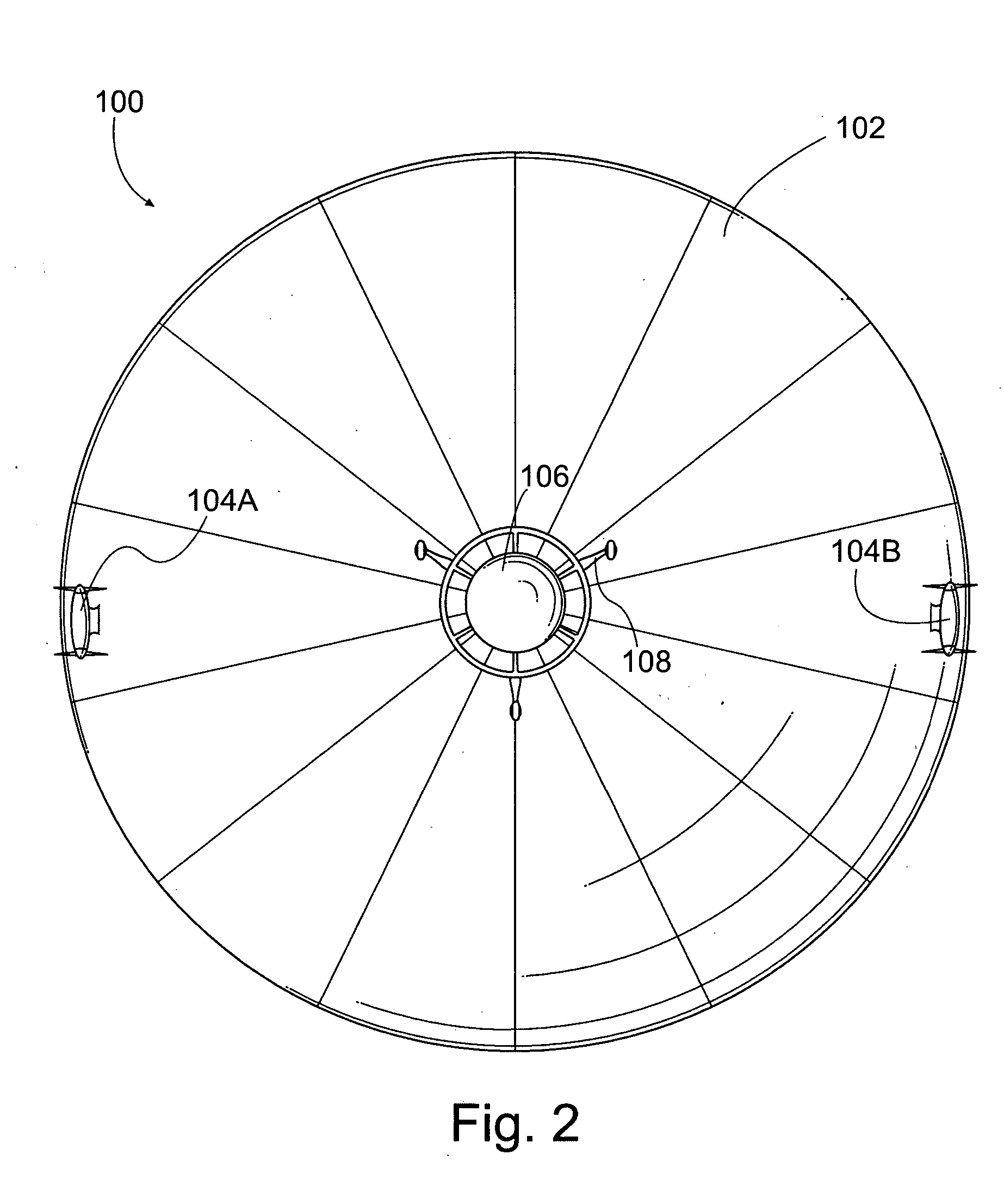[0019] One embodiment of the invention provides an active DCB
system in which a fixed-volume
hull is filled with a lifting gas to provide lift to an airship. One or more flexible compartments and / or one or more fixed volume tanks are disposed within the hull having one or more pumps and valves to receive and release air. A controller is configured to pump the air from outside the airship and into the one or more flexible compartments and / or tanks under pressure. In the case of the flexible compartments, the air is pumped into them, inflating them under pressure and in turn compressing the lifting gas against the hull. As the lifting gas is compressed and displaced by the one or more flexible compartments, the airship becomes statically heavier and less buoyant. In the case of a tank, the air is pumped into the tank under pressure, increasing the
mass of air within the tank and compressing the air within the tank. As the mass of air within the tank increases, the airship becomes statically heavier and less buoyant. In either case, if a sufficient amount of air is pumped
on board, the airship will become statically heavy enough to descend to the ground and even to remain grounded as
payload is offloaded. Conversely, if a sufficient amount of air is released, the airship will become statically light enough to ascend. By pumping varying amounts of air into and out of the airship, the static weight of the airship (and thus its rate of ascent and / or descent) can be precisely controlled.
[0020] Another embodiment of the invention provides an active density
control system for an airship including a fixed-volume hull to hold a lifting gas and a fixed-volume tank disposed within the hull, the fixed-volume tank having one or more pumps and / or valves to receive and release the lifting gas. A controller is configured to pump the lifting gas from the hull and into the fixed-volume tank. As the lifting gas is pumped into the tank under pressure, it is replaced by air that is pumped from the
atmosphere into one or more flexible compartments disposed inside the hull. The airship becomes statically heavier by an amount substantially equal to the mass of the air pumped
on board and the compression of the lifting gas. The controller is further configured to release the pressurized lifting gas from the fixed-volume tank back into the hull. As the lifting gas reenters the hull, air is forced or released from the one or more flexible compartments. The airship becomes statically lighter by an amount substantially equal to the mass of air displaced by the decompressing lifting gas and released back into the
atmosphere. In this manner the static weight of the vehicle can be altered as desired, thus providing
vertical control of the airship. In this embodiment, the greatest pressure differential is borne by the fixed-volume tank, and therefore the ability of the fixed-volume tank to withstand pressure is important.
[0021] Another embodiment of the invention provides an active density
control system for an airship including a hull configured to hold a lifting gas, a fixed-volume tank contained within the hull and configured to hold air, a first outlet device for releasing air from the fixed-volume tank to decrease the static weight of the airship, and a first inlet device for introducing air into the fixed-volume tank to increase the static weight of the airship. The system may also include one or more flexible compartments contained within the hull and configured to hold air. Also, the system may include a second outlet device for releasing air from the one or more flexible compartments to decrease the static weight of the airship, and a second inlet device for introducing air into the one or more flexible compartments to increase the static weight of the airship.
[0022] Another embodiment of the invention provides an active density
control system for an airship including a fixed-volume hull to hold a lifting gas and a fixed-volume tank disposed within the hull, the fixed-volume tank having a first section to hold air and a second section to hold the lifting gas, the two sections of the fixed-volume tank separated by a flexible, gas impermeable divider. One or more valves and / or pumps serve to move air and / or the lifting gas into and out of the fixed-volume tank. In one embodiment, a controller is configured to control the one or more valves and / or pumps to pump air into the first section of the tank, forcing the lifting gas in the second section of the tank into the hull via a valve. In this embodiment, the greatest pressure differential is borne by the hull. In a second embodiment, a controller is configured to control the one or more valves and / or pumps to pump air into the first section of the tank, compressing the lifting gas in the second section of the tank. In the second embodiment, the greatest pressure differential is borne by the fixed-volume tank. In these embodiments, the mass of air pumped into the tank increases the static weight of the airship. The controller is also configured to control the one or more valves and / or pumps to release air from the tank back into the
atmosphere, thereby decreasing the static weight of the airship. In the first embodiment, the compressed lifting gas within the hull is allowed to expand back into the fixed-volume tank via a pump or valve. In the second embodiment, the lifting gas in the second section of the tank expands as it is depressurized.
 Login to View More
Login to View More  Login to View More
Login to View More 


